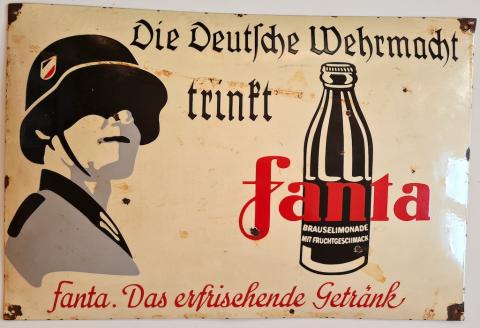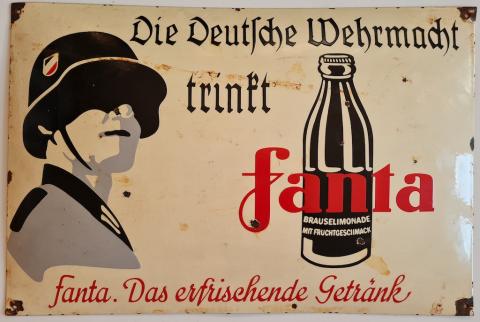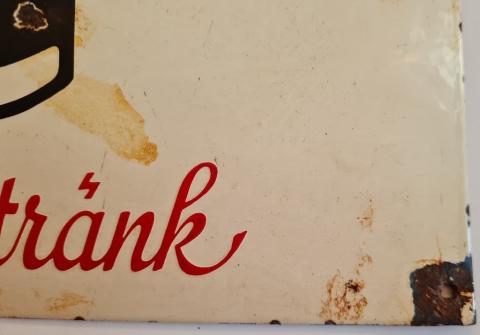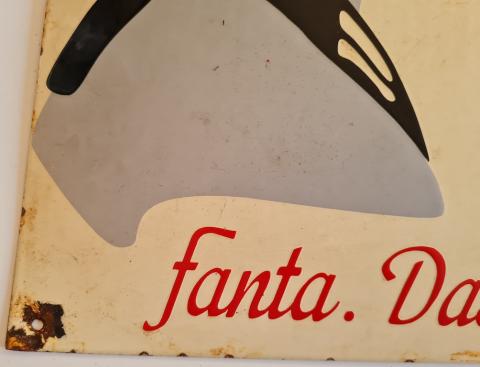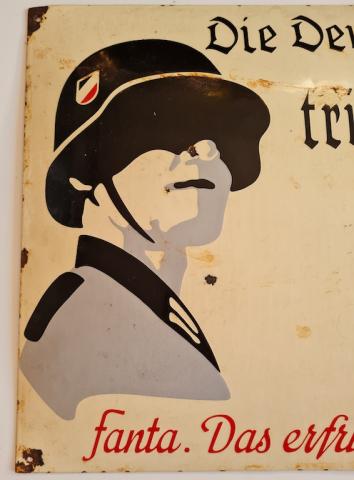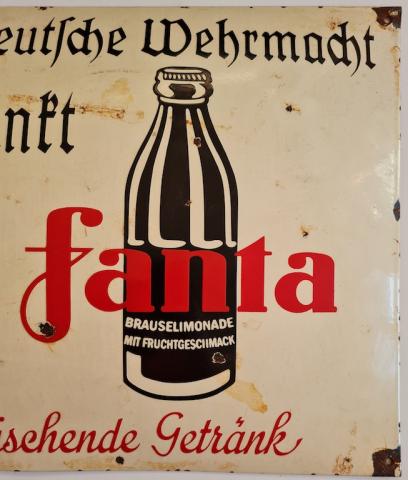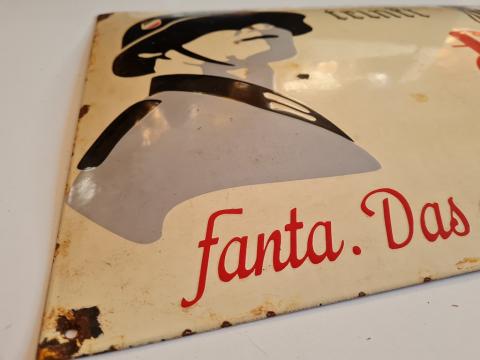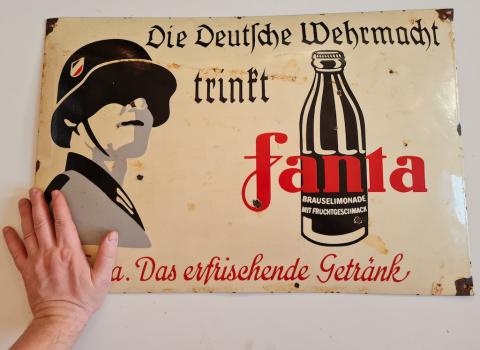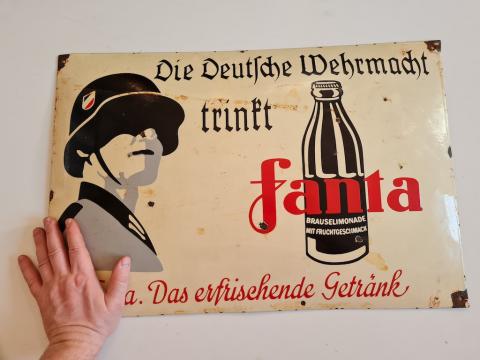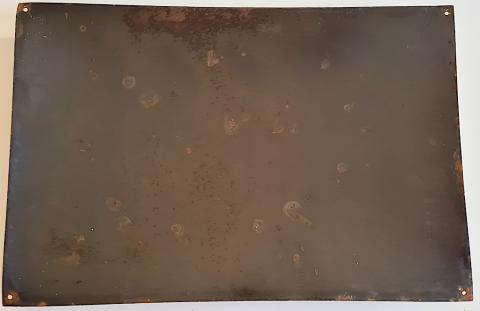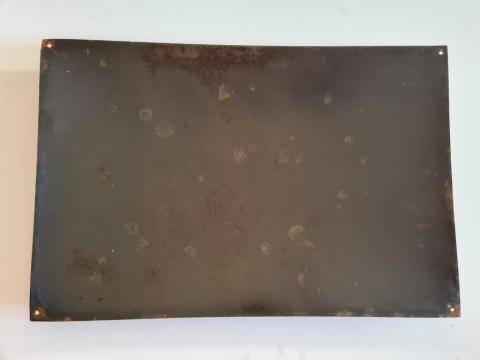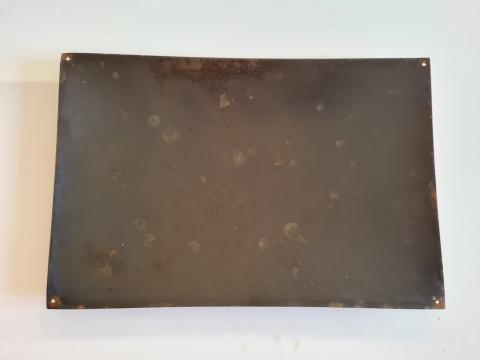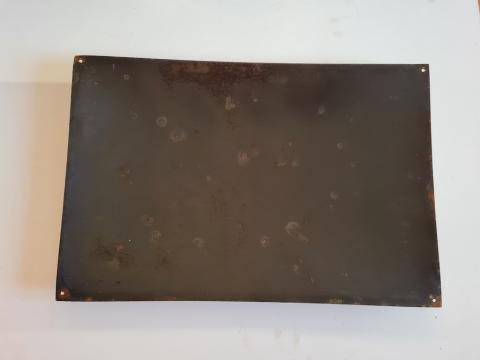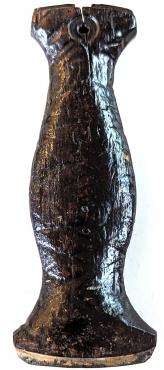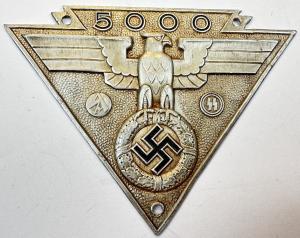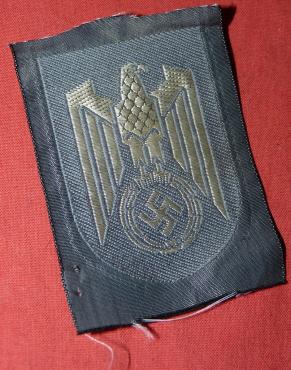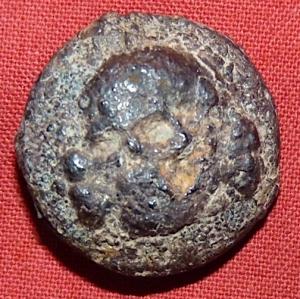VERY RARE WW2 German Third Reich FANTA enamel large advertising sign
| List price(USD): | $1,200.00 |
| Price(USD): | $795.00 |
| You save(USD): | $405.00 |
WW2 German Third Reich FANTA enamel large advertising sign
EXTREMELY RARE, MAYBE THE ONLY ONE LEFT !!
Dimensions 70 x 40 cm.
During the Second World War, the US established a trade embargo against Nazi Germany, making the export of Coca-Cola syrup difficult.[2] To circumvent this, Max Keith, the head of Coca-Cola Deutschland (Coca-Cola GmbH), decided to create a new product for the German market, using only ingredients available in Germany at the time, including beet sugar, whey, and apple pomace—the "leftovers of leftovers", as Keith later recalled.[2][3] The name was the result of a brainstorming session, which started with Keith's exhorting his team to "use their imagination" (Fantasie in German), to which one of his salesmen, Joe Knipp, retorted "Fanta!".[3]
The German plant was cut off from Coca-Cola headquarters following America's entry into the war following the Japanese attack on Pearl Harbor in 1941. After the war, The Coca-Cola Company regained control of the plant, formula, and the trademarks to the new Fanta product—as well as the plant profits made during the war.
In 1943 alone, 3 million cases of Fanta were sold in Germany. Many bottles were not consumed as a beverage but used as a cooking ingredient to add sweetness and flavor to soups and stews, as sugar was severely rationed.
During the war, the Dutch Coca-Cola plant in Amsterdam (N.V. Nederlandse Coca-Cola Maatschappij) suffered the same difficulties as the German Coca-Cola plant. Keith put the Fanta brand at the disposal of the Dutch Coca-Cola plant, of which he had been appointed the official caretaker. Dutch Fanta had a different recipe from German Fanta, elderberries being one of the main ingredients.
Fanta production was discontinued when the German and Dutch Coca-Cola branches were reunited with their parent company after 1945. Following the launch of several drinks by Pepsi-Cola in the 1950s, Coca-Cola relaunched Fanta in 1955. The drink was heavily marketed in Europe, Asia, Africa, and South America, although it did not become widely available in the United States until the 1960s because the company feared it would undermine the strong market position of their flagship cola.
